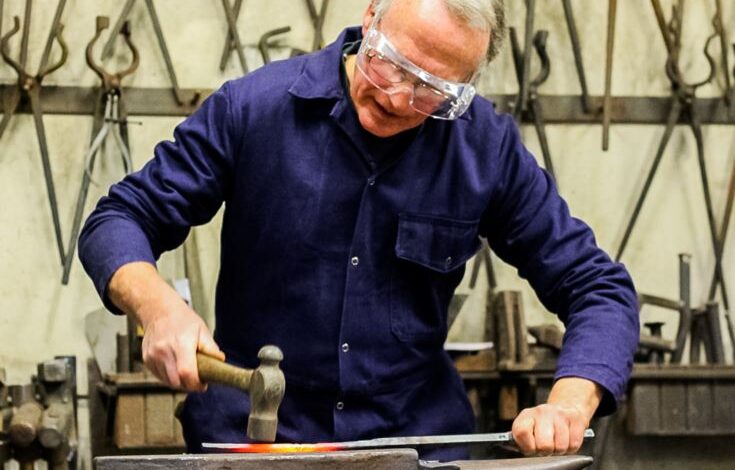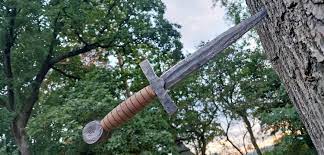Blacksmith Experience

The Ultimate Guide to a Blacksmith Experience: What to Expect and How to Prepare
If you’ve ever been intrigued by the art of metalworking, participating in a blacksmith experience is one of the most exciting and hands-on ways to explore this ancient craft. Whether you’re a hobbyist, a history lover, or simply curious, this experience offers a blend of creativity, tradition, and practical skill-building.
What Is a Blacksmith Experience?
A blacksmith experience is a guided, beginner-friendly session where participants learn the basics of forging metal. Most workshops take place in traditional-style forges or modern metal studios, allowing you to understand how heat, tools, and technique come together to create functional or decorative pieces.
Why Try a Blacksmith Experience?
1. Learn an Ancient Craft
Blacksmithing dates back thousands of years, and joining a workshop gives you a rare chance to practice techniques that have been passed down through generations.
2. Build Something With Your Own Hands
One of the most rewarding parts of the blacksmith experience is walking away with a finished item—such as a hook, bottle opener, knife, or decorative piece.
3. Boost Creativity and Confidence
Working with fire and metal may seem intimidating, but with professional guidance, you’ll gain confidence and tap into a new creative skill.
4. Enjoy a Unique Adventure
A blacksmith experience is unlike typical classes or hobbies. The sound of hammering steel and the glow of the forge create a one-of-a-kind environment.
What You Will Learn During a Blacksmith Experience
While each workshop may differ, most include:
1. Safety Basics
Instructors explain proper clothing, protective gear, and safe movements around the forge.
2. Heating Techniques
You’ll learn how to heat metal to the right temperature—usually glowing orange or yellow—so it’s ready to shape.
3. Hammering and Shaping
Using an anvil and hammer, you’ll practice shaping the heated metal through controlled strikes.
4. Twisting and Forming
Some workshops teach decorative techniques such as twisting or tapering metal.
5. Cooling and Finishing
Finally, you’ll quench your piece in water or oil and apply finishing touches.
What to Wear and Bring
Before joining any blacksmith experience, be sure to have:
- Closed-toe leather or sturdy shoes
- Long cotton pants (avoid synthetics)
- A long-sleeve shirt or T-shirt made of natural materials
- Hair tied back, if applicable
- A willingness to get a bit dirty and have fun
Some studios provide gloves, eye protection, and aprons.
Who Can Participate?
A blacksmith experience is usually suitable for beginners, teens, and adults. Most workshops do not require prior knowledge, and instructors guide every step. However, because physical strength can vary, sessions are designed to be safe and manageable.
Tips to Get the Most Out of Your Blacksmith Experience
- Ask questions—this is the best way to learn.
- Take your time and focus on technique rather than speed.
- Enjoy the creative process instead of aiming for perfection.
- Follow all safety instructions closely.
Conclusion
A blacksmith experience is an exciting opportunity to step into the world of metalworking and explore a craft filled with history and creativity. Whether you want to try something adventurous, develop a new hobby, or simply appreciate traditional skills, blacksmithing offers a hands-on, memorable, and rewarding experience for people of all backgrounds.
Here is a unique, easy-to-read FAQ section that naturally includes your keyword “blacksmith experience.”
FAQ: Blacksmith Experience
1. What is a blacksmith experience?
A blacksmith experience is a guided, hands-on workshop where beginners learn to heat, shape, and forge metal using traditional tools such as a hammer, anvil, and forge. You usually create a small item to take home.
2. Do I need previous experience to join?
No. Most blacksmith experience sessions are designed for complete beginners. Instructors demonstrate every step and ensure you work safely and confidently.
3. How long does a blacksmith experience usually last?
Workshops can last anywhere from 1 hour to a full day. Short sessions often focus on simple items, while longer experiences allow for more detailed projects.
4. What can I make during the workshop?
Common projects include hooks, bottle openers, keychains, fire pokers, small knives, and decorative pieces. Each blacksmith experience varies, so options depend on the instructor and skill level.
5. Is blacksmithing safe for beginners?
Yes—when proper safety steps are followed. Instructors teach participants how to handle hot metal, tools, and equipment safely during the blacksmith experience.
6. What should I wear to a blacksmith experience?
Wear long pants, closed-toe shoes (preferably leather), and natural-fiber clothing. Many studios provide gloves, aprons, and eye protection.
7. Can teens or kids participate?
Many workshops allow teenagers, typically ages 13–16 with supervision. Some offer family-friendly sessions. Always check age requirements before booking a blacksmith experience.
8. Will I get to use real blacksmith tools?
Yes. Participants usually use real hammers, anvils, tongs, and a working forge. The instructor controls any advanced equipment.
9. Is the activity physically demanding?
It can be mildly physical because hammering and lifting metal requires some energy. However, most blacksmith experience workshops are designed to suit beginners of various strength levels.
10. Can I keep what I make?
Absolutely. One of the best parts of a blacksmith experience is taking home the item you forged by hand.


